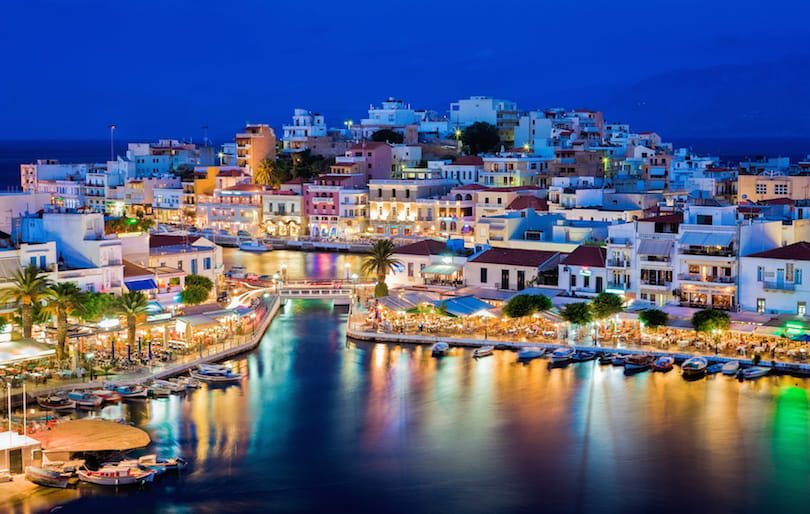
Santorini reminds you that you’re on a volcano everywhere you look. The lunar sceneries, the black and crimson beaches, and the lava pebbles. The captivating beauty of the Greek island stems from the area’s dramatic volcanic history. Santorini is recognised for its stunning crescent-shaped crater, half of which is underwater, making it the world’s only sunken caldera. It was formed roughly 3,600 years ago by one of the greatest recorded eruptions. The explosion was so powerful that it destroyed Santorini’s ancient city of Akrotiri and struck a devastating blow to the island’s maritime Minoan culture of the time.
Today, Santorini, also known as Thira, is Greece’s premier romantic playground, with opulent villas and resorts providing A-listers with pampering retreats and magical locations for expensive weddings and photoshoots alike. The sheer volcanic cliffs of the island, positioned around 1,000 feet above sea level, provide a spectacular geological canvas, with whitewashed dwellings balanced on the brink. It’s no surprise that it’s one of the most photographed places on the planet.
Few realize that beneath the hypnotic kaleidoscope of colours lies an active volcano
Every evening, the island draws to a halt to witness Santorini’s world-renowned sunsets. As the golden hour approaches, the blue and white domed village of Oia fills up. The sky transforms into a vibrant display of crimson, orange, and pink colours as the sun sets behind the caldera’s cliffs. Thousands of people gasp as the last rays fade away in the sea.
Few people realise that an active volcano sits behind the mesmerising kaleidoscope of colours. Santorini is part of the Hellenic Volcanic Arc, one of Europe’s most active volcanic areas, with over 100 eruptions in the last 400,000 years. Kolumbo, the most active and potentially dangerous underwater volcano in the East Mediterranean, is located five miles northeast of Santorini and is part of the same volcanic system. Kolumbo has been submerged in the Aegean Sea for nearly 400 years, yet it is not sleeping. It last erupted in 1650, killing 70 people and causing a 40-foot tsunami. Strong earthquakes and aftershocks were observed, as well as noxious fumes and smoke plumes.
Scientists are aware that Kolumbo bursting might cause widespread devastation. It has been visited by some of the world’s largest oceanographic expeditions, and monitoring has expanded in the last 20 years. The JOIDES Resolution deep drilling ship, one of the largest US research vessels, visited Santorini for its maiden Mediterranean trip between December 2022 and February 2023.
The massive ship brought “an entire floating lab to the area,” according to volcanologist and expedition co-chief Tim Druitt. Researchers were able to drill approximately 8,000 metres (26,000 feet) into the sea’s surface to gather previously unreachable sediments in order to try to recreate the history of volcanism in the area.
The relationship between earthquakes and volcanoes is also being researched
The findings, which are anticipated later this year, should assist scientists not only predict future eruptions but also explain the behaviour of other active volcanoes across the world that threaten millions of people who live nearby. The relationship between earthquakes and volcanoes is also being researched. Evi Nomikou, a geological oceanographer at the University of Athens, has taken part in every expedition on her native Santorini for the last 20 years. “We are gradually putting together a geopuzzle [showing] which parts were [originally] land, which parts were water,” she says. “If we can better understand past eruptions and their impact, we have a roadmap to better address future challenges.”
The JOIDES Resolution voyage is not the area’s first big research. According to Nomikou, the long-studied severe conditions discovered at Kolumbo prompted NASA to sponsor a historic trip in 2019. “At the bottom of its crater is an extraterrestrial ocean teeming with life forms found on other planets.” With its active hydrothermal vents spewing hot water and minerals, the inhospitable environment provided an ideal testing ground for new cutting-edge technology using Autonomous Underwater Vehicles. NASA tested submersibles that it believes will one day explore extraterrestrial waters on Jupiter and Saturn’s moons.
The Kardashians, Lady Gaga, and Shakira are among the celebs who have taken a dip in Santorini’s crystal-clear waters
Another recent study also uncovered a previously undetected magma chamber beneath Kolumbo. Scientists believe that the chamber may also be key to understanding the seismic activity in this region. Fuming volcano and bubbling craters also piqued the interest of Hollywood producers, who chose Santorini as the opening scene for the adrenaline-pumping 2003 Hollywood blockbuster “Lara Croft: Tomb Raider – The Cradle of Life.” Using Santorini’s stunning cliffs as a backdrop, Angelina Jolie found herself in perilous situations in strange seas while searching for undersea treasure.
Following the filming, Jolie and her then-husband Brad Pitt took a vacation to Santorini, and they weren’t the only ones. The Kardashians, Lady Gaga, and Shakira are among the celebs who have taken a dip in Santorini’s crystal-clear waters. Every summer, huge yachts cruise back and forth between Santorini and Greece’s other famous magnet, the party island of Mykonos, with VIP passengers exposing their private surroundings in glittering posts.
